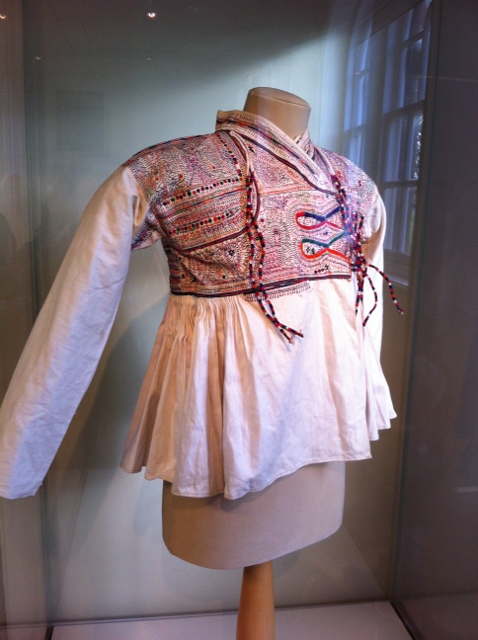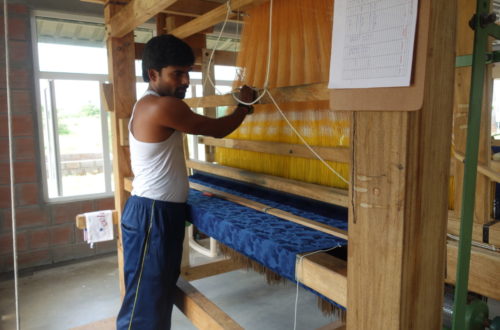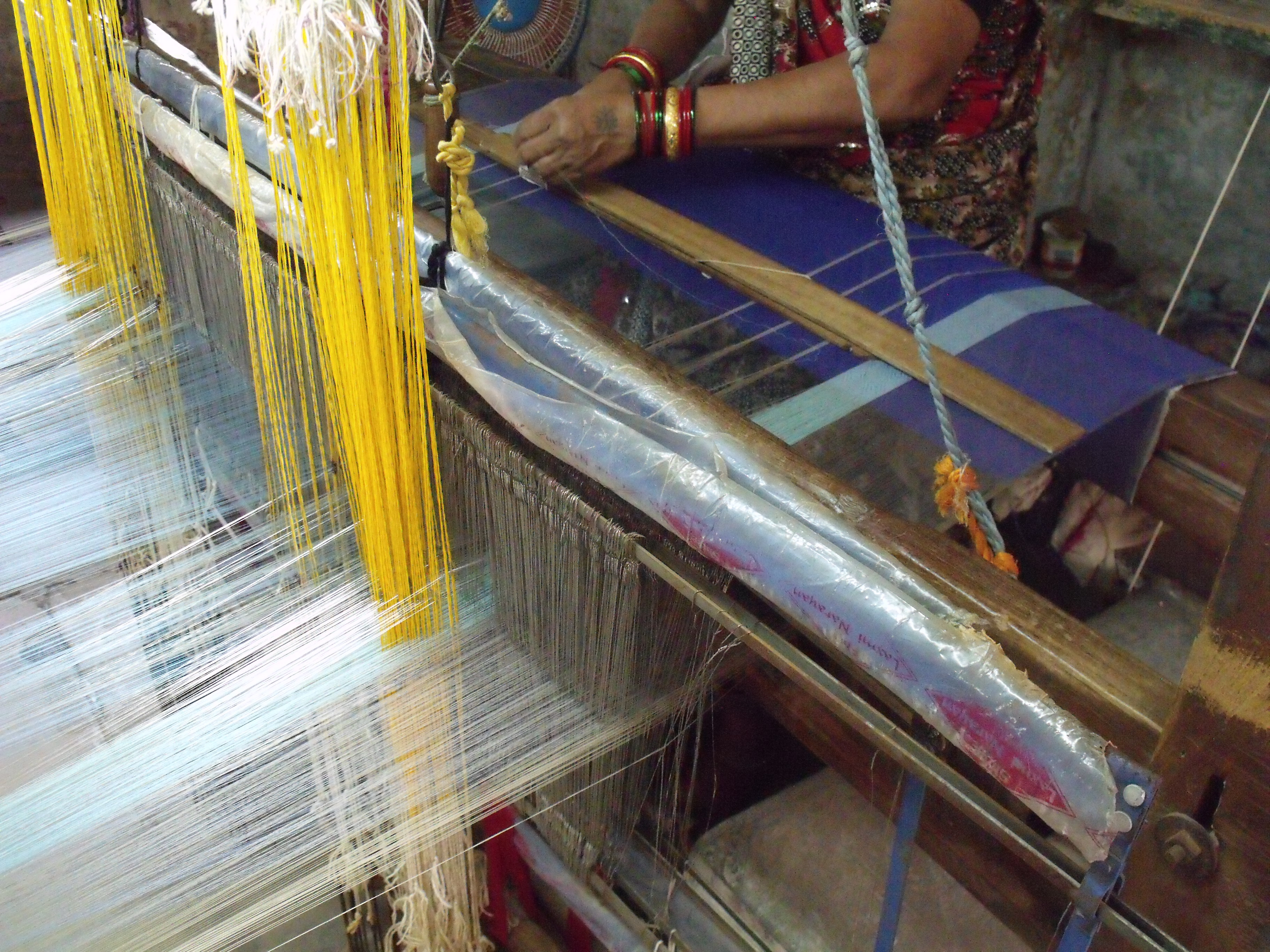I have been following LOkesh Ghai’s research for his MA at Manchester Metropolitan University with zeal since we crossed paths at the University as I was completing my MA and he beginning his.

LOkesh has a rich and varied career, graduating from National Institute of Fashion Technology in Gandhinagar, Gujarat, running his own textile design practice, teaching at Kala Raksha Vidhyalaya in Kutch, and in the last few years, taking part in various artist residencies in the UK. I have previously written about his first exhibition at Platt Hall Costume Gallery as part of the Global Threads and Cotton Exchange projects in Manchester. Before that, in 2011 Lokesh produced work for the exhibition ‘Made for Manchester, Objects of Exchange‘, at Manchester Craft and Design Centre as part of the Asia Triennial. Before this, Lokesh created objects inspired by collections in the V&A for the exhibition ‘A Sense of Place’ at the V&A Museum of Childhood. The resulting work was an endearing collection of figures and garments based on 19th Century ballad, ‘Fair Charlotte’.
The title of LOkesh’s MA research is ‘Reinventing the traditional Indian Milkman’s dress’. The ‘Milkman’s dress’ is the traditional kediyun worn by men of rural cattle herding communities in Gujarat, India. The complex, intricately made jacket traditionally hand-made by women of these communities, is light, airy and comfortable to wear while out in the semi-desert plains of Kutch tending to camels, goats or buffalo. It ties at the side and is gathered about a third of the way down to form multiple pleats which makes the jacket completely breathable.

The making of the garment is planned so that as little fabric as possible is wasted. The pattern pieces are measured by holding the cloth against the body and measured using hand and arm spans. The white cotton is thick and durable and therefore withstands the harsh weather of the desert. Sometimes the garment is left plain, sometimes embellished with bold bright embroidery.
The art and wearing of this garment is fast diminishing though. There is now only a handful of women in villages near Bhuj who hand-stitch the kediyun, most are machine made by tailors. As the work of these pastoral communities becomes less and less due to land being taken over by large companies using the land for factories, in turn, the wearing of the kediyun has become rarer. European dress has had a huge influence on Indians, particularly men for whom, in both city and village the shirt and trouser combination is the most popular. In his talk LOkesh showed us a picture of a man wearing the kedhiun and salwaar pants with a turban standing proud. Alongside this was a picture of the same man wearing tailored trousers and a check shirt. The difference in the way the man held himself was significant in each outfit.
It is with this extensive documentation and research as well as the making his own kediyun to further understand the process, that LOkesh is preserving the knowledge of this valuable and culturally rich garment. LOkesh also shot a film of his fieldwork in Kutch, showing his apprenticeship with the kediyun makers, his interviews with the makers and wearers and the detailed visual documentation of the hand process. He will show this film to the makers and wearers and participants of his research, hoping that in seeing the interest in their tradition amongst others will help give value and importance to the kediyun for all those associated with it.








3 Comments
mangalagowri
useful article.
Pingback:
Leigh Fellner
Your description of the decline of this garment reminds me of the smock worn in rural England until the end of the Victorian era: similar changes in technology and lifestyle.